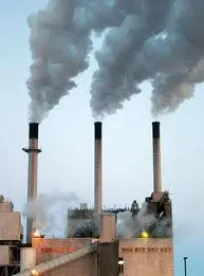As I have reported previously, the US Court of Appeals for the DC Circuit issued a significant decision in September 2019 on EPA’s implementation of the so-called “Good Neighbor Provision” of the federal Clean Air Act (CAA). That is the CAA’s principal provision addressing what is often termed “interstate transport,” the physical process in which emissions from cars, trucks, factories, power plants, and myriad other sources—and the resulting air pollution—are carried by prevailing winds across state borders. The main purpose of the Good Neighbor Provision (section 110(a)(2)(D)(i)(I) of the CAA) is to prevent “significant contribution” by “upwind” states’ emissions to violations of national ambient air quality standards (NAAQS) in “downwind” states. Although states have the principal responsibility to implement this provision, EPA periodically has invoked its CAA authority to impose requirements to curb interstate transport when it determines upwind states have not adopted adequate controls.
EPA most recently took that step in 2016, when it issued the “Cross-State Air Pollution Rule Update,” commonly called the “CSAPR Update.” That rule sets emission “budgets” for fossil fuel-burning electricity generating facilities in 22 states in the eastern half of the country. Those budgets limit emissions of nitrogen oxides that, according to EPA’s computer modeling projections, would otherwise contribute significantly to projected violations of the NAAQS for ozone that EPA established in 2008. (Another, more stringent ozone NAAQS issued in 2015 currently is being addressed separately through state implementation plans that EPA is reviewing.)
On September 13, 2019, the DC Circuit issued a decision (Wisconsin v. EPA, 938 F.3d 303) that in large part upheld the CSAPR Update but found it flawed in one important respect and remanded it to EPA for additional proceedings. Specifically, the court accepted arguments by environmental groups and Delaware that EPA had failed to demonstrate that it had satisfied its obligation to align the timeframe for required emission reductions in upwind states with deadlines for downwind states to meet the NAAQS. The court cited language in the rulemaking record describing the CSAPR Update’s emission limits as providing a degree of relief for downwind areas that—pending further analysis by EPA—may be only “partial.” The DC Circuit then followed up on October 1, 2019, with a decision in a separate case involving challenges to a 2018 rule, called the “CSAPR Close-Out Rule,” in which EPA had concluded that the CSAPR Update’s emission limits were sufficient. In that second decision (New York v. EPA, 781 F. App’x 4), the DC Circuit struck down the CSAPR Close-Out Rule on the grounds that it suffered from the same analytical flaw the court had identified in the CSAPR Update.
When the DC Circuit remanded the CSAPR Update to EPA, it denied a request by Delaware and the environmental groups to set a six-month deadline for EPA to complete remand proceedings. The DC Circuit also did not impose any other deadline for EPA action, but it noted that the challengers could seek a writ of mandamus from that court if EPA did not take action. Eschewing that course, two of the environmental groups (joined by three others) instead filed suit in the US District Court for the District of Columbia on February 7, 2020, claiming EPA had failed to perform a “nondiscretionary duty” to adopt federal implementation plans fully addressing the Good Neighbor Provision for 20 upwind states: Alabama, Arkansas, Illinois, Indiana, Iowa, Kansas, Louisiana, Maryland, Michigan, Mississippi, Missouri, New Jersey, New York, Ohio, Oklahoma, Pennsylvania, Texas, Virginia, West Virginia and Wisconsin. (The case brought by the environmental groups is Downwinders at Risk, et al. v. Wheeler, No. 1:20-cv-00349 (D.D.C.).) Twelve days later, five northeastern states—New Jersey, New York, Connecticut, Massachusetts and Delaware—and New York City filed a separate suit in the US District Court for the Southern District of New York making an essentially identical claim, but limited to 7 of the 20 upwind states (Illinois, Indiana, Michigan, Ohio, Pennsylvania, Virginia and West Virginia). (That case is New Jersey, et al. v. Wheeler, No. 1:20-cv-01425 (S.D.N.Y.).)
EPA argued in both cases that the district courts lack jurisdiction to resolve the claims. The plaintiffs in each case argued there was jurisdiction, and they sought stringent court-imposed schedules for EPA rulemaking action on the CSAPR Update remand. EPA proposed its own, significantly more extended rulemaking schedule.
On July 28, while briefing in the DC district court litigation was still underway, the district court in New York issued a decision in the case brought by the northeastern states. That decision sets a deadline of March 15, 2021—only two weeks later than the deadline the plaintiff states had sought—for EPA to issue a final rule for the seven upwind states addressed in that case. The court declined to set any specific deadline for EPA to propose a rule, though the CAA itself requires EPA to publish a proposed rule for public comment before it takes final action.
Despite statements in a September 1 filing in the still-pending DC district court case that suggested EPA at that time might be considering appealing the New York court’s order, EPA said in a September 4 filing with the DC district court that it “intends to comply with that order.” Moreover, EPA said, it “intends to issue a final, regional-scale rule by March 15, 2021, that will satisfy the Good Neighbor [Provision] requirements for all 20 of the upwind states with respect to the 2008 NAAQS (i.e., all of the states at issue in this case), and not just the 7 [upwind] states” addressed by the New York district court’s order.
An important issue in the district court litigation concerned what timetable is appropriate for EPA’s consideration of possible regulation of industrial emission sources in addition to electricity generating plants. The CSAPR Update imposes emission limits only on electricity generators. But the July 28 district court order explains that, to comply with the order, EPA must “promulgate a complete-remedy rulemaking.” In the context of the court’s discussion of the issues and the litigation filings, that statement indicates EPA is expected to address whether (and, if so, how) other emitting sources—potentially including a diverse array of facilities such as petroleum refineries, cement plants, industrial boilers and combustion turbines, paper mills and steel plants—should become subject to new emission limits to mitigate interstate transport, as well as whether any additional controls on electricity generators are warranted. EPA has argued that addressing these other industries would take considerable time due to the wide variety of facilities involved and the fact that the necessary technical and economic information is not as well developed as it is for the electricity sector. In an apparent acknowledgment of EPA’s concerns on that score, the July 28 order states—in line with language in the DC Circuit’s September 13, 2019 opinion—that EPA is not precluded from attempting “to demonstrate that it would be impossible to promulgate the final notice of a complete-remedy rulemaking by March 15, 2021.” And, likewise echoing a passage in the DC Circuit decision, the order emphasizes that “EPA still has flexibility on the substance of its rulemaking.”
On September 15, EPA sent to the Office of Management and Budget a draft of a proposed rule to address the DC Circuit’s remand of the CSAPR Update. Once the federal interagency review process has been completed and the proposed rule is signed and released, we will know more about EPA’s plans to tackle the challenging issues raised by the recent litigation on interstate transport under the CAA.




 />i
/>i

